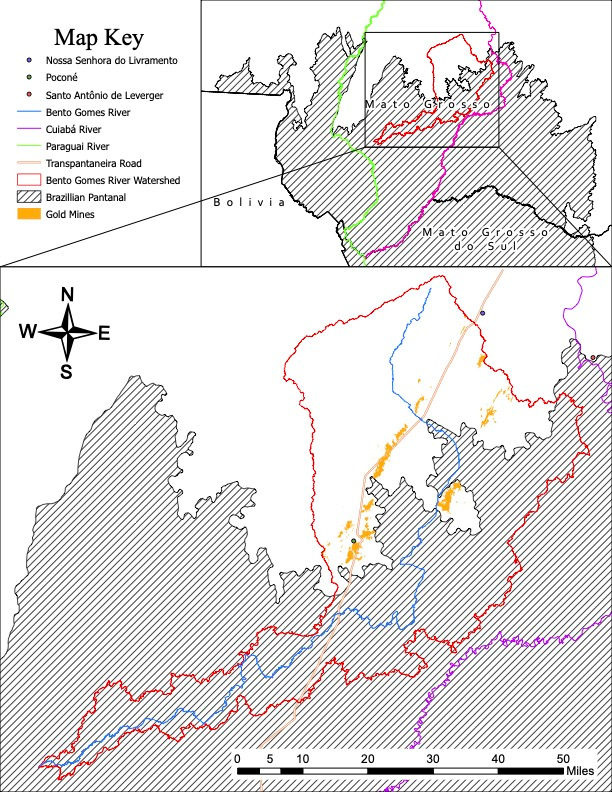Mercury Accumulation in Wetland-Dependent Birds Within the Bento Gomes River Watershed in the Northern Pantanal, Brazil
Aruã Yaym de Castro Ferreira
M.S. Student, Clemson University




South America's Pantanal is one of the world's most extensive contiguous freshwater wetlands, spanning 160,000 km2 (39.5 million acres). Consequently, its ecosystem services significantly contribute to climate regulation on a local and global scale and are dependent on the biodiversity that is a result of this biome's unique flood pulses. The Pantanal intersects Brazil, Bolivia and Paraguay, with Brazil's share (Fig. 1) accounting for approximately 80% or 140,000 km2 (35.5 million acres). Since the colonialists arrived in the Pantanal approximately 250 years ago, numerous threats, including deforestation, pollution, wildfires, and poaching, have impacted it. However, the consequences of historic gold mining have been ignored over the past 25 years. In the 1990s, researchers identified high levels of mercury in the Pantanal at different trophic levels (Lacerda et al., 1991a; Lacerda et al., 1991b; von Tümpling Jr et al., 1995; Alho & Vieira, 1997; Filho & Maddock, 1997). In recent decades, studies such as May et al. 2018 found high levels of mercury accumulation in the fur of jaguars (Panthera onca) in the Pantanal. The studies in the 1900s led to policies that outlawed the use of mercury in gold mining, but as May et al. (2018) displayed, mercury still lingers in the landscape. Thus, it is of utmost importance to investigate the mercury concentrations in the Pantanal.
The largest concentration of gold mining takes place within the Bento Gomes River watershed (Fig. 1.1), where 7,463 hectares (18,441 acres) are impacted according to the latest estimate by the MapBiomas Brazil. Sitting on the northernmost edge of the Pantanal, the Bento Gomes River watershed is the best representative for evaluating mercury bioaccumulation in the Pantanal. Our goal is to determine the degree of mercury accumulation in wetland-dependent birds in the northern Pantanal, trace its geographic source, pinpoint its position in the trophic level and food web, and correlate mercury concentrations in water, sediment, and birds. We will use birds as bioindicators because they are found higher in the trophic levels, are exposed to a wide range of chemicals, are susceptible to bioaccumulation, and are geographically widespread. To achieve our goal, we will capture wetland-dependent birds of the Anseriformes, Charadriiformes, Gruiformes, Pelecaniformes, Podicipediformes, and Suliformes clades in properties that are along the Bento Gomes River watershed mainstream; collect and estimate mercury accumulation in the water and soil/sediment of habitats where birds were captured; define prey items consumed by the species of interest via literature review, direct observations, and DNA fecal analysis; collect and estimate mercury accumulation in the prey items consumed by the species of interest; utilize spatial analysis and the project's data set to determined potential sources of mercury accumulation and model Hg concentrations throughout the watershed. The study area and our species of interest, combined with the other variables collected in this project, can provide us with great insight into the current state of mercury bioaccumulation in the Pantanal.
We expect Hg bioaccumulation in birds, water, soil/sediment, and prey items to exceed the accepted thresholds. Specifically, piscivorous bird species, which occupy higher trophic levels, are anticipated to exhibit significantly higher Hg concentrations than herbivorous and omnivorous species. Birds showcasing elevated Hg levels in their feathers will show signs of compromised health. Finally, Hg levels in birds are expected to correlate highly with Hg concentrations in the surrounding soil/sediment and water.